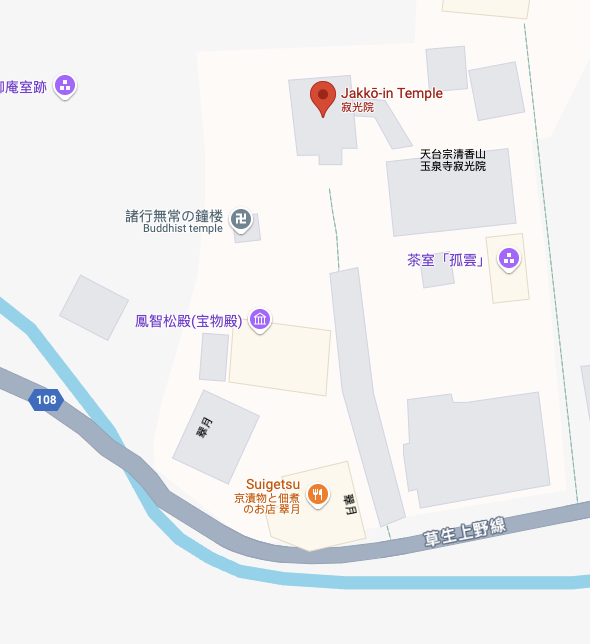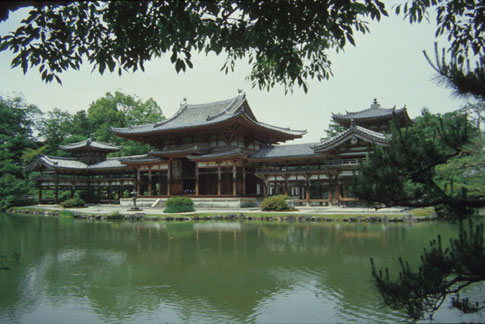
The tiny temple of Jakko-in is located in the hills to the northeast of Kyoto. It was founded at least as early as the Heian Period, and is famous as the nunnery to which the widowed Empress Kenreimonin retired after the destruction of her clan—the Taira—in the wars that brought about the end of Imperial power and the beginning of the Shogunate. Its garden is a miniature masterpiece designed to surround the temple on three sides. It was damaged by the fire that destroyed the temple in the year 2000, and although it has been undergoing restoration, the photographs on this website were taken before the temple’s destruction.Choose a view point from the map or click on Tour the Garden for more views of this garden. A more detailed history of the garden is reached by clicking on History.
The small village of Ohara, located high in the hills to the northeast of Kyoto, is the site of two Amidist temples famous for their gardens (the larger—Sanzen-in—is included on this website). The Jakko-in is equally famous for its association with the Imperial family. That it was founded by Prince Shotoku in the late 6th Century is debatable, but it is certain that it was an active nunnery when the widowed Empress Kenreimon-in retired there in 1185. One of the few members of the Taira clan to survive the defeat of the Taira at the hands of the Minamoto, her tragic life and the clan wars that surround it are recorded in the historical novel The Tales of the Heike (Heike Monogatari). The Heike Wars and the victory of the Minamoto clan mark the end of the golden age of the Heian and the beginning of the bakufu form of government that was to dominate the history of Japan through the next seven centuries. To a certain extent, Kenreimon-in’s retirement symbolizes the end of Imperial rule and the beginning of the Shogunate that reduced the role of the Emperor to that of a figurehead.
The tiny temple of Jakko-in certainly existed as early as the Heian Period, although it was restored and “modernized” by Toyotomi Hideyori, the son of Hideyoshi, in 1603. The building and its famous wooden statue of Jizo survived until the end of the millennium, but in the early morning of May 9, 2000, both were destroyed by a fire that appeared to be deliberately set. The photographs featured on this website were taken on two separate occasions preceding the date of this disaster, and while the temple and its garden have been undergoing a restoration that was to have been completed in 2004 or 2005, I have not visited the site since its destruction and can not comment on its current state.
The garden that surrounds the temple on three sides is said to date back to the Heian Period, but many of its details are certainly the product of the 17th-Century reconstruction and later restorations. They will be discussed in the captions beneath the individual views.

